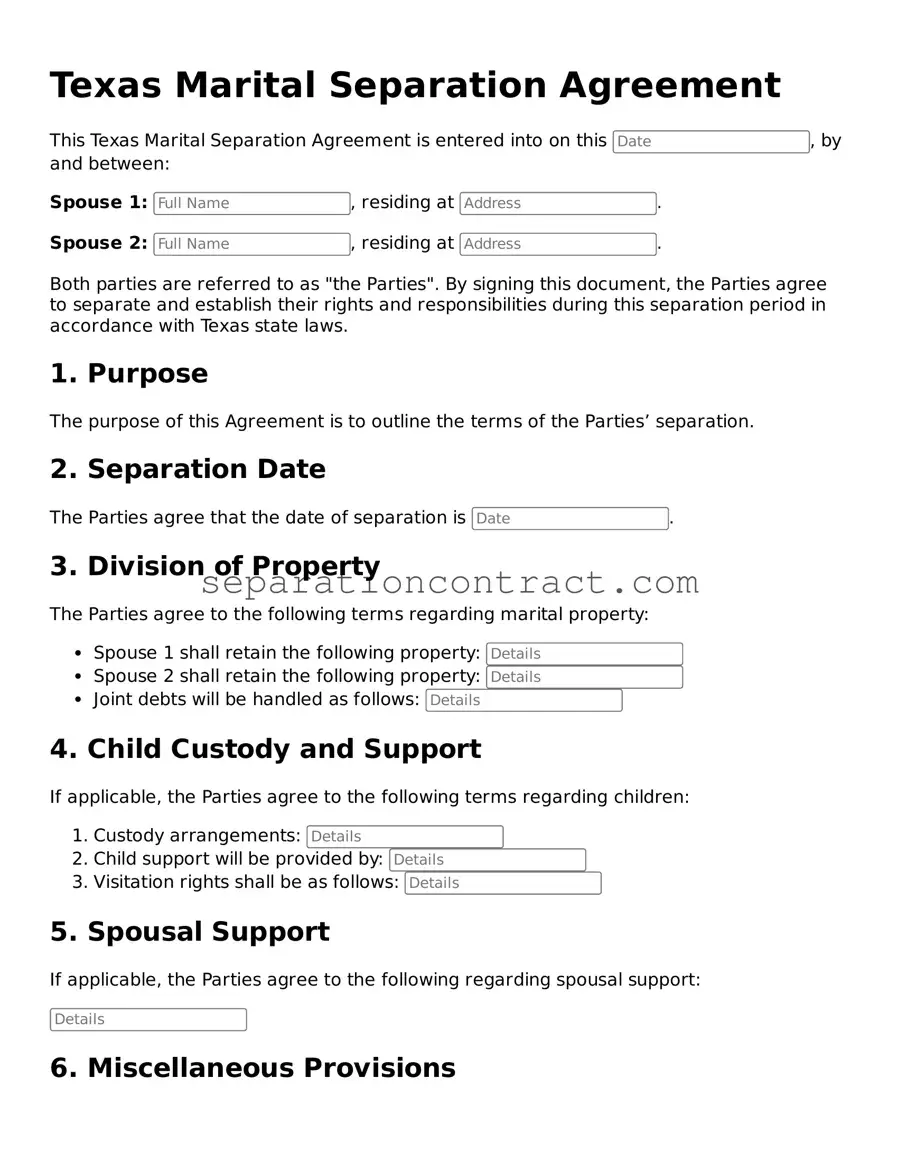Completing the Texas Marital Separation Agreement form can be a complex process. Many individuals make common mistakes that can lead to misunderstandings or complications later on. It is essential to approach this form with care and attention to detail.
One frequent error is failing to include all necessary parties in the agreement. Both spouses must sign the document for it to be valid. Omitting one party's signature can render the agreement unenforceable, leading to potential disputes in the future.
Another mistake often seen is the lack of clarity in defining terms. Individuals may use vague language when describing assets, debts, or responsibilities. This ambiguity can create confusion and conflict later on, as each party may have different interpretations of the agreement.
People sometimes overlook the importance of detailing the division of property. Failing to specify how assets will be divided can result in disagreements down the line. It is crucial to be as precise as possible about which items belong to whom.
Additionally, many individuals neglect to address future responsibilities, such as child support or custody arrangements. These aspects are vital for ensuring that both parties understand their obligations moving forward. Without clear provisions, misunderstandings may arise, causing unnecessary stress.
Another common oversight is not consulting with a legal professional. While it may seem tempting to fill out the form independently, seeking legal advice can provide valuable insights. An attorney can help identify potential pitfalls and ensure that the agreement is comprehensive and legally sound.
Some individuals also fail to consider tax implications when dividing assets. Certain assets may have tax consequences that can affect both parties. Ignoring these factors can lead to financial surprises after the agreement is finalized.
Inadequate communication between spouses can lead to misunderstandings. It is essential for both parties to discuss their expectations openly. Miscommunication can result in assumptions that may not align with the final agreement.
Many people also forget to keep copies of the signed agreement. It is important for both parties to retain a copy for their records. This practice can help avoid disputes about what was agreed upon in the future.
Lastly, individuals may rush through the process. Taking the time to carefully review each section of the form is vital. A rushed approach can lead to mistakes that may have lasting consequences. Patience and thoroughness are key to completing the Texas Marital Separation Agreement form successfully.
